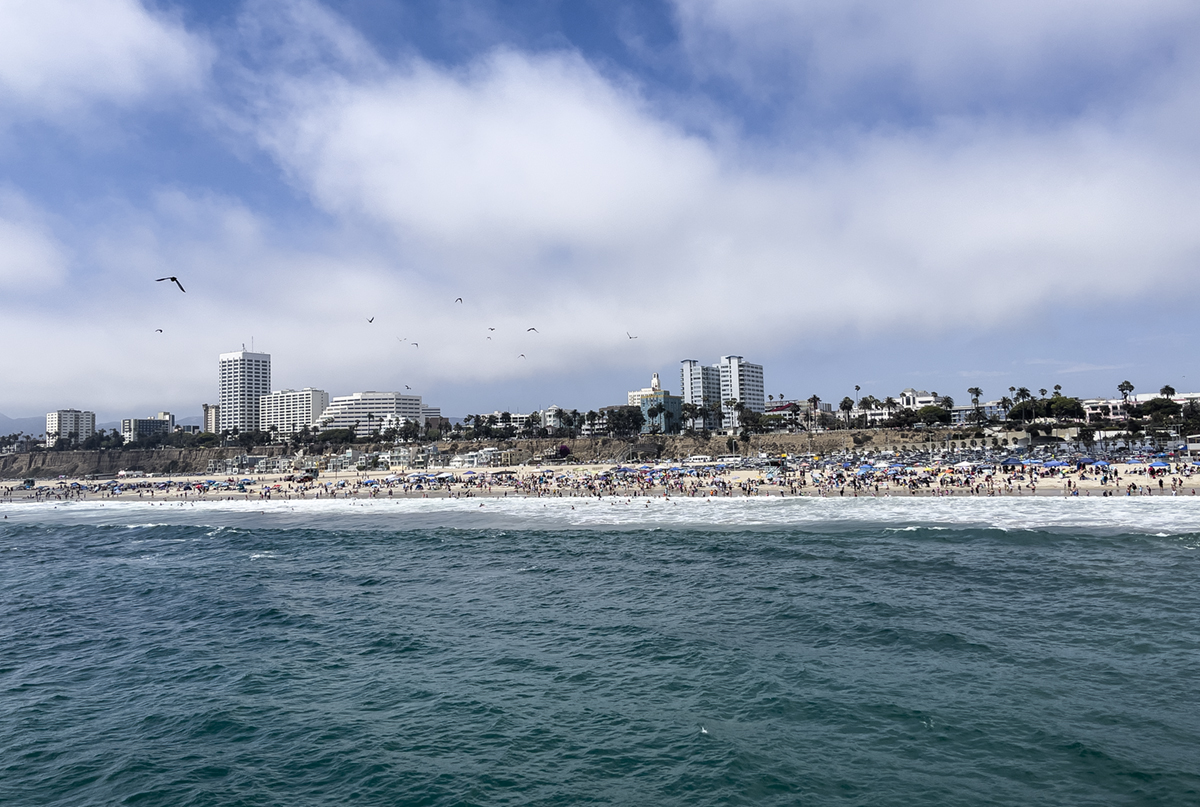UCLA researchers to study effects of wastewater spill in Santa Monica Bay

Seventeen million gallons of untreated sewage spilled from the Hyperion Water Reclamation Plant into Santa Monica Bay in July, prompting the closure of several beaches and some UCLA researchers to take action. (Noah Danesh/Daily Bruin)
This post was updated Aug. 8 at 9:46 p.m.
UCLA researchers tested water for environmental hazards affecting ocean life following a recent sewage spill in the Santa Monica Bay.
The spill was caused by a wastewater backup at the Hyperion Water Reclamation Plant – the city’s oldest and largest wastewater treatment plant – and began the evening of July 11, lasting hours as the facility discharged 17 million gallons of raw sewage into the bay, according to a July 21 statement from Los Angeles Sanitation & Environment.
In response to the hazard, the Los Angeles County Department of Public Health closed Dockweiler State Beach and El Segundo Beach, located about 10 and 11 miles south of UCLA, respectively, the following morning.
Hyperion, which is owned and operated by the city of Los Angeles, was forced to divert sewage after a “nearly catastrophic flooding” damaged equipment used to treat water, according to the statement.
The 17 million gallons of sewage spewed from the emergency-use pipe is only a small fraction of the treated wastewater that is normally released into the ocean, said Rebecca Shipe, an adjunct associate professor of ecology and evolutionary biology.
On average, the plant sees around 275 million gallons of wastewater per day in dry weather, with the sewage spill amounting to 6% of the average daily load, according to LA Sanitation.
“It’s not that unusual, but it was unusual that it was raw sewage,” Shipe said.
Bacteria such as E. coli in fecal matter from raw sewage can be harmful to humans who are swimming, surfing or wading in the ocean water, she also said.
Jeroen Molemaker, an associate atmospheric and oceanic sciences researcher, said news of the spill prompted him and other UCLA researchers to sample the polluted areas to understand how the spill affected ocean life.
Molemaker tested the salt content of the ocean water in real time on the UCLA Zodiac research vessel to determine the extent of the area that had been affected by the spill, noting that sewage water has a lower salt content than ocean water.
“As long as we see fresher water, then we know we’re still in sewage water,” Molemaker said.
The researchers also collected water samples to measure the amount of certain nutrients like nitrates and phosphates, as those can lead to the growth of harmful algal blooms, Shipe said.
Rapidly growing algal blooms can release toxins, get caught in fish gills or smother coral beds, according to the National Oceanic and Atmospheric Administration.
Molemaker said wastewater is typically released five miles away from the coast and deep enough that sunlight cannot activate algae growth in the nutrient-rich water. During the spill, however, the Hyperion plant released the sewage through an emergency-use pipe located closer to the ocean’s surface and the coastline, he said.
The currents of the Santa Monica Bay naturally dispersed the wastewater, effectively diluting it by spreading it into the ocean, which led LACDPH to reopen beaches three days later after water tests met state standards.
However, LACDPH issued a water use warning July 28 for beaches near Dockweiler and El Segundo, cautioning residents to be careful in affected water and citing high bacterial levels. As of Aug. 2, LACDPH has lifted warnings for both beaches after water quality levels met state standards.
According to a LACDPH press release, bacteria levels naturally fluctuate, especially after rainstorms, but UCLA researchers say the Hyperion plant is still a cause for concern.
“With the recent reports that Hyperion is continuing to release partially treated waste from the 5-mile pipe, there could still be nutrient-based stimulation of algal blooms,” said Jeana Drake, an assistant project scientist in earth, planetary and space sciences, in an emailed statement.
The samples collected by the research team have yet to be analyzed, Drake said.
Because the samples were taken on short notice in response to the news of the spill, the lab space and personnel necessary for the analysis are not yet available, Molemaker said.
But based on the salinity values, the water from the spill was indistinguishable from the usual freshwater that runs in from the marina, Molemaker said, so while serious, it does not appear to be a major event.
In the aftermath of the spill, Shipe also said the pollutants would generally be diluted in the ocean to return the water to normal use.
“It’s something that happens and that people can get very alarmed about but something that we can deal with,” Shipe said.


